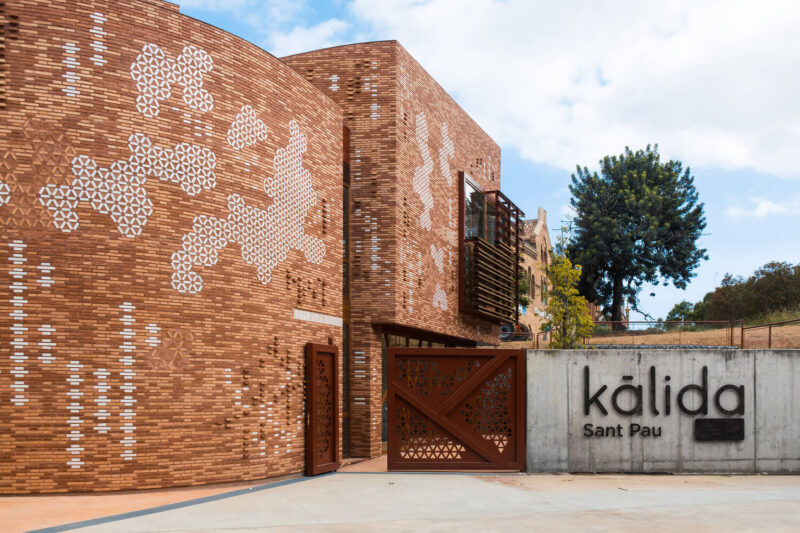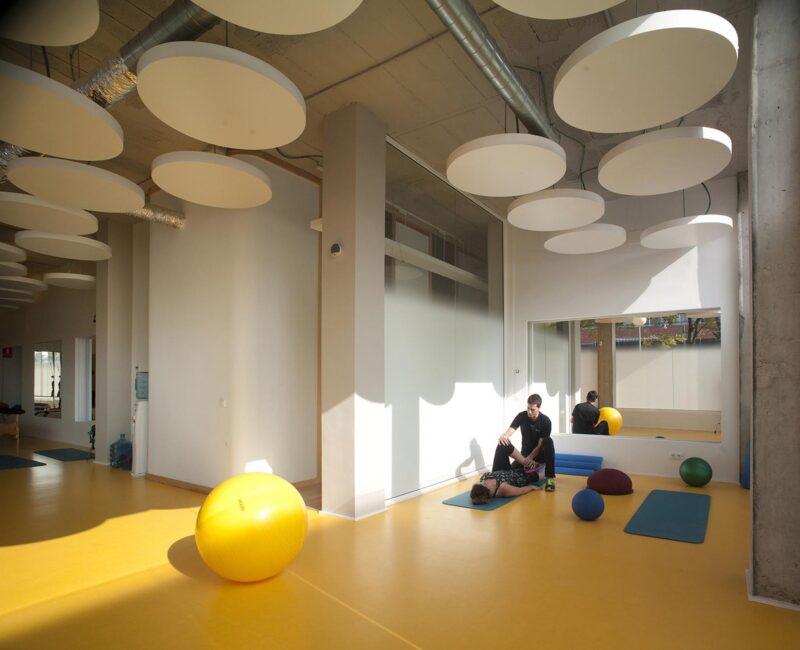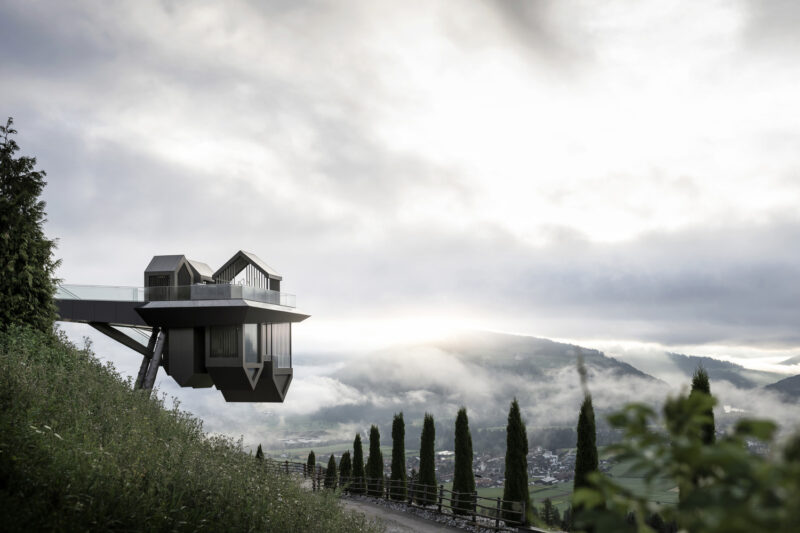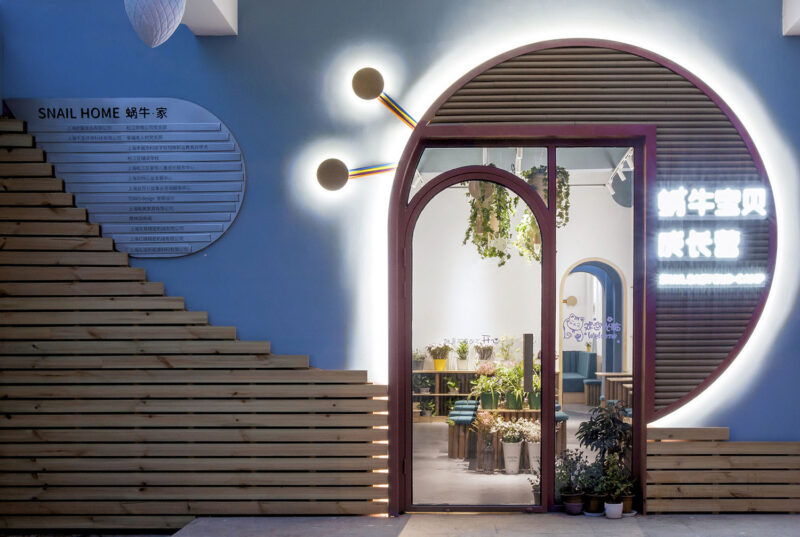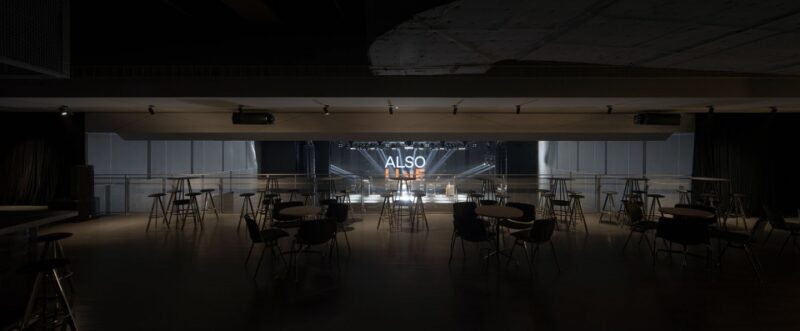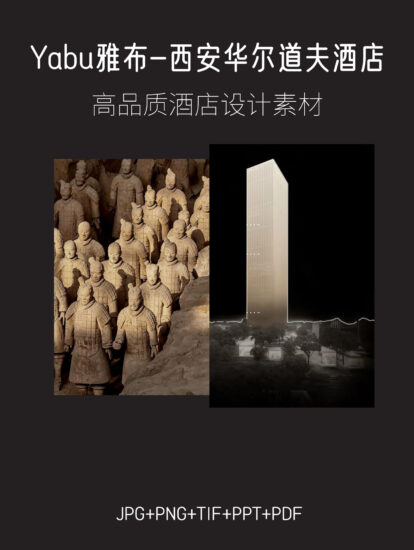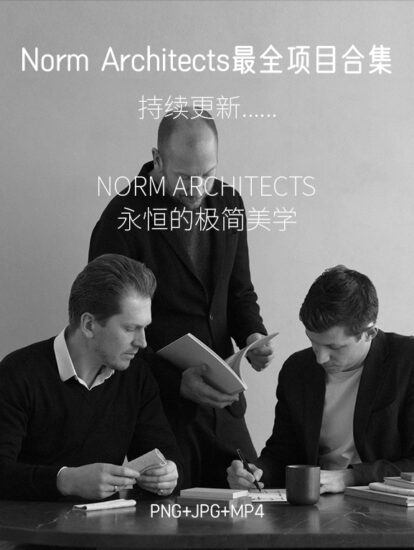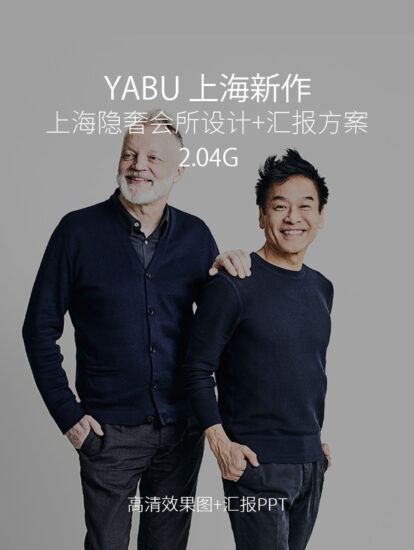全球設計風向感謝來自 中國電子工程設計院有限公司 健康與養老研究所 的公共空間項目案例分享:
本多感官環境活動室位於北京國投健康長者公寓,主要用於白天為在住及周圍社區老人提供認知鍛煉,以輕度認知障礙和失智老人為主。該空間設計在滿足一般適老化需求的基礎上,對多感官適度良性刺激、空間辨識度、空間特質契合老人記憶、提供自主自立機會、操作便捷性等方麵提出更高需求,並將已被證實有效的非藥物幹預方法與空間設計相融合。
The project – SDIC Health & CEEDI Multi-sensory Activity Room is located in SDIC Health Senior Apartment in Beijing. It aims to provide sensory stimulation and cognitive training for the elderly living in and surrounding communities, mainly focused on MCI and mild dementia patient. Based on meeting the general elderly-oriented requirements, the design is chasing for higher requirements, including moderate stimulation of multi-sensory, spatial recognition, spatial fit with the elderly’s memories, providing opportunities for self-reliance, and convenience of operation for the elderly. Furthermore, this project is combined with non-drug intervention therapy proved to be effective.
設計的原則是以老人熟悉的場景、食物、物件、聲音、行為等為媒介,以激活老人的長時回憶和注意力,通過老人自主或專業人士帶領的方式,讓老人得到良性的視覺、聽覺、嗅覺、觸覺、味覺等感官刺激以鍛煉老人的感知覺、執行功能、注意力、手眼協調、時空定向能力和日常生活能力。除了在沉浸環境中通過物料和設備操作進行多感官刺激外,老人還可以參與小組活動及遊戲,建立多人之間的交流關係,活動多為愉快和自主的氣氛,成員間的信任感也相對容易建立。老人除可獨自探索環境之外,也可向照護人員或其他人員請求幫助,從而也獲得表達自己的動機。
環境設計的目的是通過營造老人熟悉而感興趣的多感官場景,以激活長時回憶、注意力和自主性,比如采用老人兒時的場景、家鄉食物、舊的物件、方言、自然和音樂的聲音、以前的活動等為媒介,通過老人自主或專業人士帶領的方式,讓老人得到良性的視覺、聽覺、嗅覺、觸覺、味覺等感官刺激以鍛煉老人的感知覺、執行功能、注意力、手眼協調、時空定向能力和日常生活能力。
The purpose of the environment design is to activate long-term memory, attention and autonomy by creating the elderly’s familiar and interesting multi-sensory scenes, such as childhood scenes, hometown food, old objects, dialects, sounds of nature and music, and previous activities. Through the way of self-determination or leading by professional staff, the elderly are able to acquire positive sensory stimulation such as vision, hearing, smelling, touching and tasting, which contributes to exercise the elderly’s sensory perception, executive function, attention, hand-eye coordination, space-time orientation and activities of daily living. In addition to multi-sensory stimulation by materials and equipment operation in the immersion environment, the older people are also able to participate in group activities and games to establish the communication among multiple people.
依托於經過特殊設計的多感官環境,我們進行了沉浸式多感官環境刺激幹預隨機對照實驗。在該實驗中,我們利用空間環境中的感官元素,為失智老人營造“五感沉浸”的幹預環境,並提供平衡的視覺、聽覺、嗅覺、觸覺和味覺刺激。同時,結合懷舊、音樂、運動、生活訓練、藝術等內容,驗證了沉浸式多感官環境空間對老人有認知功能鍛煉的作用。
After renovating this multi-sensory environment activity room, we conducted a randomized controlled trial of a multi-sensory environmental stimulation. In this trial, We made use of the sensory elements in the spatial environment to create a “five-sense immersion” environment for the elderly with dementia, and provide balanced visual, auditory, smell, touch and taste stimulation. Furthermore, we developed a series of intervention plans to verify the effect of this immersive multi-sensory environment space on dementia elderly combined with the concept of human-centered treatment and other non-medicine intervention, such as reminiscence, music and life training.
1.項目 Project
1.1 多感官環境設計 Environment Description
該房間位於國投健康長者公寓三層南向,空間寬7.8米,深8.45米。之前出於醫療環境的需求,該房間原設計為白色牆麵、淺木紋PVC地麵、礦棉石膏板吊頂、白色平板燈、無固定家具和設施。整體色調偏向於淺色,地麵、牆麵和頂棚色差很小,非常不利於失智老人對空間結構的識別和定向,故將部分白色牆麵改為深綠色和橙黃色,在提高空間感受的同時,主要為了讓老人更好地區分區域、增強辨識度。在牆邊白色地櫃頂部,布置了橙色和黃色編織坐墊,一是為了通過亮麗的色彩邀請老人坐下來,也是為了避免老人混淆地櫃和白色牆麵的界限。整個活動室分為小組活動區、係統控製區、沉浸式觸控投影牆麵、五感牆、樂高牆、時間角、自然角和情感角。
The room is located on south side of the third floor of the SDIC Health Senior Apartment, with a width of 7.8m and a depth of 8.45m.The room was originally designed with white wall, light wood-grain PVC floor, mineral wool gypsum board ceiling, white flat light, unfixed furniture and equipment for the medical environment. The overall tone tends to the light color, and the color difference between the ground, walls and ceiling is very small, which is not conducive to the recognition and orientation of the spatial structure for older people with dementia. Therefore, part of the white walls are changed into dark green and orange. While improving the spatial experience, the main purpose is to make the elderly better distinguish areas and enhance their identification. Orange and yellow woven cushions are arranged on the top of the white lower floor cabinet beside the wall, in order to attract the elderly to sit down through bright colors, and to avoid confusion of the barrier between cabinet and wall. The room are divided into several parts including group activity area, immersive touch projection wall, 5-sense wall, LEGO wall, time corner, nature corner, music corner, and system control area.
∇ 改造前(拍攝:韓涵)Figure 1 Before renovation (Photoed by Han Han)
∇ 改造後(拍攝:韓涵)Figure 2 After renovation(Photoed by Han Han)
∇ 平麵圖 Figure 3 Plan
1.2小組活動區 Group activity area
社會工作中根據組織活動內容以及參與對象的不同,小組適合規模也不盡相同,其中5 人小組比較適合討論,8人小組最容易完成任務,治療小組一般在 5~7 人12。考慮部分老人會需要家屬、照護人員或誌願者、社工陪同,空間布置12張70cm×70cm方桌,可根據活動內容和形式進行多種組合布置。為了讓老人有更明確的色彩辨識和親切溫暖的觸感,在白色桌椅的基礎上,每把椅子配置一個棉布條編織的彩色坐墊,且采用不同顏色,以便老人通過色彩增強對空間位置的記憶和識別,以更容易定位自己的位置和周邊老人。
In social works, the proper group size is different according to the activity programs and different participants. Generally, 5-person group is suitable for discussion, 8-person group is the easiest to complete task, and a treatment group is appropriate for 5 to 7 persons It is considered that some of the elderly will need to be accompanied with family, caregivers, volunteers or social workers, twelve 70x70cm square tables can be arranged differently based on the content and form of activities. In order to make the elderly have a clear color identification and warm touch, each chair is covered with a colored cushion woven with cotton strips. Different colors are adopted for the elderly to strengthen the memory and recognition of spatial position, so as to identify their own position and surrounding people more easily.
∇ 小組活動區(拍攝:韓涵)Figure 4 Group activity area(Photoed by Han Han)
1.3觸控互動牆麵 Touch projection wall
為了便於老年人操作、提高其互動性和主動性,我們將一麵牆改造為觸控投影牆。用於老人自行操作認知鍛煉的內容,或作為沉浸式活動的一部分。
針對老年人時間空間認知障礙、遠期記憶尚存等特點,我們也開發了地圖和二十四節氣兩款互動遊戲。
地圖遊戲中,加入了山川、河流、湖泊、高原等自然風貌模擬場景,並且能展示幾大典型區域的特色生活環境視頻,讓體驗者沉浸於記憶的場景當中;建築模式可以展示各省典型的標誌性建築和景區,點擊即可觸發其環境場景照片,同時加入了各地方言,讓老人多感官沉浸於視覺和聲音環境當中;美食模式,展示各地域的特色美食。
二十四節氣遊戲主要鍛煉老人時間定向能力,將各節氣和典型節日與春夏秋冬四季正確對應,即可觸發節氣歌播放,同時還呈現節氣及四季場景視頻。
In order to enhance the convince of the operation for the elderly, improve their interaction and initiative, a wall was renovated with touch projection function. It is used for the cognitive training for the elderly, as a part of immersion activities.
Based on the characteristics of dementia – cognitive impairment of time and space, and the retention of long-term memory, we also developed two interactive games (Chinese map game and the 24-solar-term game).
In Chinese map game, simulated natural scenes, such as mountains, rivers, lakes and plateaus were added, and the distinct living environment videos of several typical regions can be displayed, so that users can immerse themselves in the memorial scene. The architectural mode can display the typical landmarks and scenic spots in each province. After clicking the landmark, it will trigger the local environmental scene and play the local dialects, which immerse the elderly in visual and sound environment. The food mode shows the special food in different regions.
The 24-solar-term game mainly trains for the ability of time orientation. Once correctly matching the solar terms or typical festivals to the four seasons, it will trigger the playing of solar term songs, and also present the solar terms and four seasons scene videos.
∇ 觸控互動牆麵(拍攝:韓涵)Figure 5 Touch projection wall(Photoed by Han Han)
∇ 沉浸懷舊場景(拍攝:韓涵)Figure 6 Memorial scene(Photoed by Han Han)
1.4互動韻律燈光 Interactive rhythmic lighting
相關實驗研究顯示,音樂和燈光雙環境因素對情緒同時刺激時, 具有交互作用。所以將活動區頂部設置燈光顏色、亮度可調節的燈具,可通過智能終端控製變化,可根據音樂、視頻的節奏、音調等律動變化,同時提高老人的注意力穩定性,讓老人更好地融合進場景當中。
Relevant experimental studies show that both stimulation of music and lighting create interactive effects on emotion. Therefore, flat lamps with adjustable light color and brightness are set on the ceiling of the activity area, which can be controlled by the intelligent terminal and changed according to the rhythm and tone of music and videos. This helps the elderly improve their attention stability, so that they can better experience the scene.
∇ 互動韻律燈光(攝影:韓涵)Figure 7 Interactive rhythm light(Photoed by Han Han)
1.5氣味播放器 Intelligent smell player
智能氣味播放器,是一種佩戴於頸部、能播放特定氣味的設備,可集中控製其播放開關、時長、氣味種類等,由於播放時間短、劑量小、離鼻部近等特點,便於根據場景內容快速切換氣味。結合幹預活動的內容場景,項目訂製了幾十種味道料盒,讓老人嗅覺與其他感知覺結合,更好地沉浸於環境當中。一定程度上突破了味覺體驗的傳統技術。
A Kind of Olfactory training equipment – intelligent smell player – is also applied in the room. It is a kind of equipment that can release specific smell hanging around neck. It can be centrally controlled playing, duration and smell type. Due to the aspects of short duration, low dose and close to nose, it is easy to switch the smell according to the scene rapidly. Based on the scenes of the intervention activities, dozens of smell boxes were customized to enhance the feeling of immersing in the environment, stimulating or inducing the olfactory nerve reconstruction, to improve olfactory function, which breakthrough the traditional technology of olfactory experience to some degree.
∇ 與場景相結合的氣味播放(攝影:韓涵)Figure 8 Using the intelligent smell player with the visual stimulation(Photoed by Han Han)
1.6五感牆 Five-sense Wall
通過穿孔背板置物架這種靈活的展現形式,結合展示物品的擺放,包括懷舊玩具、認知鍛煉玩具、熟悉的植物、活動物料等,設計多種主題情景,激發老人主動探索的行為。例如請老人將活動物料根據色彩進行收納;在老式餅幹桶內放置有香味有手感的麵包模型,通過寫有“打開看一看、聞一聞”的卡片提示,引導老人打開、聞裏麵的味道、觸覺去探索、拿出來確認,過程就形成了一個有趣的多感官體驗;將有氣味特點的植物包在荷包裏,通過寫有“聞一聞、猜一猜”的卡片提示,引導老人在聞、猜、打開、解密的一係列過程中進行思考、鍛煉。也可根據幹預活動主題對牆麵進行環境布置,例如超市主題活動時,牆麵通過商品、價錢、分類標誌的布置形成超市場景;懷舊主題活動時,牆麵通過老物件、老照片、老報紙、獎狀等物品的布置形成懷舊場景;音樂主題活動時,通過擺放樂器、歌詞、歌譜、歌唱家照片等形成音樂場景。
By using the flexible display form of perforate back shelf, combined with the exhibition of the items, including reminiscent toys, cognitive training toys, familiar plants, activity materials, etc., a variety of theme scenarios are designed to stimulate the initiative of the elderly’s exploration behavior. For instance, the elderly could be asked to arrange the materials according to the color; they still could be attracted by some bread models with real smell and touch feeling in the old biscuit box with a tip card says “open and smell”; some specific species would be placed in small bags with a tip card says “smell and guess”, and the elderly could exercise their ability to recognize and think in the process of smelling, guessing, opening and deciphering. The decoration on the wall shelf can also be changed according to the activity theme. For example, in the supermarket theme activities, it is formed by the arrangement of products, price tags and classification marks; in the reminiscent theme activities, it is formed by the exhibition of old objects, old photos, old newspapers, awards and other items; in the music theme activities, it is formed by placing instruments, lyrics, music scores, and singers’ photos.
∇ 五感牆(攝影:韓涵)Figure 9 Five-sense wall(Photoed by Han Han)
∇ 懷舊餅幹盒(攝影:韓涵)Figure 10 Interaction with the old biscuit box(Photoed by Han Han)
∇ 氣味角——氣味荷包(攝影:韓涵)Figure 11 Smelling corner – species bags(Photoed by Han Han)
∇ 懷舊物件(攝影:韓涵)Figure 12 Traditional Chinese toys and objects(Photoed by Han Han)
1.7樂高牆 LEGO wall
利用樂高積木像素化、自由組合成的特點,可以通過請老人設計或參照圖案並動手完成的過程,鍛煉色彩辨識能力、執行功能和整體構圖能力。每次活動前,會邀請老人共同創作一副與活動主題相關的圖案,為活動內容做引導,老人根據自己的能力和興趣參與其中部分工作任務。同時也提供小朋友與老人共度時光、分享交流的機會。
With the characteristics of pixel and free combination of LEGO building blocks, the color recognition ability, executive function and overall composition ability can be practiced through the process of forming the pattern according to their or others design. Before each activity, the elderly will be invited to create a pattern related to the theme of the activity with the caregivers. The elderly can choose the task that they are interested in. It also provides an opportunity to create a leisure time of communication with children.
∇ 樂高牆(攝影:韓涵)Figure 13 LEGO Wall(Photoed by Han Han)
1.8自然角 Nature corner
自然角有植物、鸚鵡、竹子風鈴、草坪、石頭等,希望為老人營造一個清新自然可以享受時光的角落。在沉浸之餘,采用老人熟悉的溝通交流方式,布置了激發老人內心思考、回憶過去的場景,準備了郵筒、信紙、郵票、信封,老人可以將自己的想法寫成信件放在郵筒裏。布置了一個音樂角,通過色彩來區分按鍾音高,不識譜的老人也可以通過色彩辨識,彈奏音樂,通過眼睛、手指、耳朵的協調和腦部的思考,協調操作進行鍛煉。
There are plants, parrot toys, bamboo wind bells, artificial lawn and stone in Nature corner, for creating a fresh natural space where the elderly can enjoy time. It also set up a scene that activates the old people’s inner thinking and recalls the past memory with communication methods that the elderly are familiar with – writing letters. Mailbox, stationery, stamps and envelopes. The elderly can write whatever they think into letters and put them into the mailbox. There is also a music corner. Because of using colors to distinguish pitches of the music bells, the elderly who cannot read music are able to play the instrument by color recognition. The elderly can exercise through the coordination of eyes, fingers, ears and brain thinking.
∇ 自然角(攝影:韓涵)Figure 14 Nature corner(Photoed by Han Han)
∇ 色彩音階按鍾(攝影:韓涵)Figure 15 Using colors to distinguish pitches of the bells(Photoed by Han Han)
∇ 信件空間(攝影:韓涵)Figure 16 The mailbox and letter paper(Photoed by Han Han)
1.9時間角 Time corner
失智老人多有時間定向障礙,包括年代、季節和時刻等,故設計時間角以提醒老年人所處時間、增強其時間定向。采用深綠色牆麵,布置大字的鍾表、日曆,以及結合了自然景物特征的二十四節氣卡片。
Most the elderly with dementia are suffering from temporal disorientation, including the inability to recognize era, season and time. Therefore, the time corner is designed to remind the elderly of time, and enhance their temporal orientation. A clock with obvious large-scale numbers on the panel, a calendar, and 24-solar-term cards combined with natural features are decorated on a dark green wall.
∇ 時間角(攝影:韓涵)Figure 17 Time Corner(Photoed by Han Han)
1.10情感角 Emotion corner
情感角目的在於引導老人分享自己的感受,讓更多的老人與空間建立起情感的聯係。布置有活動照片,並且邀請老人坐下來留言。
The purpose of emotion corner is to lead the elderly to share their feelings and to establish emotional connection between people and space. The activity photos are illustrated in this area, and the elderly will be invited to sit down and leave a message.
∇ 情感角(攝影:韓涵)Figure 18 Emotion corner(Photoed by Han Han)
2.隨機對照試驗 Randomized Controlled Trial
本次研究從白天來做活動的周圍社區老人和公寓在住老人中選取55~95歲有認知障礙的老人(MMSE10~26分)作為研究對象,分為幹預組和對照組。實驗組27人,對照組30人。實驗組給予多感官環境刺激幹預,幹預分為7個不同的主題,包括《歲月金曲》《印象北京》《幸福花園》《玩轉超市》《舌尖上的記憶》《金色故鄉》和《光影人生》,實驗每周1次,每次40分鍾~1個小時,共7次。
In this study, dementia patients aged 55~95 years (MMSE score 10~26) were selected from the elderly people living in the apartment and surrounding communities who did activities during the daytime as the research subjects and divided into a intervention group(n=27) and a control group(n=30). The intervention group received multi-sensory environment intervention with 7 different themes, including “Reminiscence Melodies”, “Impression of Beijing”, “Sensory Garden”, “Go Supermarket Shopping”, “A Taste of Memory”, “Golden Hometown” and “Life in Cinema”. The experiment was conducted once a week for 1 hour each time and 7 times in total.
幹預前、幹預後分別對兩組老人進行評估,評估內容包括一般資料、MMSE、聽覺詞語學習測驗、數字劃消測驗、Stroop色詞測驗、言語流暢性測驗、日常生活功能量表ADL、神經精神問卷NPI-Q、病人健康問卷抑鬱量表PHQ-9、、廣泛焦慮量表GAD-7。
The patients would be evaluated before and after the intervention. The assessment content includes general information, MMSE, Auditory Word learning test, Number Cancellation test, Stroop Color Word test, Verbal Fluency test, Activities of Daily Living scale (ADL), Neuropsychiatric Inventory (NPI-Q), Patient Health Questionnaire (PHQ-9), and Generalized Anxiety Screening Scale (GAD-7).
所有數據采用SPSS統計學軟件進行分析,一般資料采用獨立樣本t檢驗,兩組老人幹預前後各量表得分采用重複測量方差分析。
結果顯示,MMSE量表(F=11.754, p =0.001)和詞語流暢性(F=4.717,p =0.034)的得分有顯著性差異。也就是說,多感官環境刺激幹預對失智老人的認知功能和語言表達能力有短期的積極效果。
All data were analyzed by SPSS. Independent sample T-test was used for general information. The scores of each scale before and after intervention were measured by ANOVA for Repeated Measurement.
The results indicated that MMSE scale (F=11.754, P =0.001) and Verbal Fluency test-Animal (F=4.717, P =0.034) had significant differences. In other words, multi-sensory environmental intervention has a short-term positive effect on cognitive function and language expression in the elderly with dementia.
3.總結 Summary
國投健康長者公寓多感官環境活動室為周邊老人和在住老人提供認知鍛煉活動。設計過程挖掘老年人的生活時代特點和興趣愛好,結合多感官刺激的原則和幹預活動的需求,通過沉浸場景和多形式變化的形式,更好地為老人營造多感官刺激環境,以增強老人的沉浸感、自主性和趣味性。
SDIC Health & CEEDI multi-sensory activity room provides cognitive training for the elderly living in SDIC Apartment and surrounding communities. The process of design excavates the characteristics of the elderly’s life background and their hobbies. Through the immersive scenes and diversity of programs, combined with the principles of multi-sensory stimulation and demand of intervention activities, it creates a better sensory stimulation environment for the elderly, in order to enhance the feeling of immersion, autonomy and curiosity.
致謝|Acknowledgements:
國投健康長者公寓為本項目提供場地、人員招募等重要研究支持。
SDIC healthy elderly apartment provides important research support such as space and personnel recruitment for the project.
誠和敬樂智坊受本項目委托進行人員招募、幹預及能力評估等工作。
CHJCARE Lezhi were commisioned to recruit elderly, conduct the intervention activities and capacity the elderly’s assessment.
項目信息
項目名稱:國投健康長者公寓多感官環境活動室
設計方:國投健康長者公寓多感官環境活動室
公司網站:http://www.ceedi.com.cn
聯係郵箱:hanhan@ceedi.cn
項目設計&完成年份:2019
主創及設計團隊:韓涵 陳文 江瑩 胡旭婧 李鵬 魯衛華 崔震等
項目地址:北京市西城區阜成門外大街
建築麵積:66㎡
攝影版權:韓涵
客戶:國投健康產業投資有限公司
Project name:SDIC Health & CEEDI Multi-sensory Environment Activity Room
Design:China Electronics Engineering Design Institute CO., LTD.(CEEDI) Research Institute of Health and Aging
Website:http://www.ceedi.com.cn
Contact e-mail:hanhan@ceedi.cn
Design year & Completion Year:2019
Leader designer & Team:Han Han Chen Wen Jiang Ying Hu Xujing Li Peng LuWeihua CuiZhen etc.
Project location:北京市西城區阜成門外大街
Gross Built Area (square meters):68㎡
Photo credits:韓涵
Clients:國投健康產業投資有限公司





















